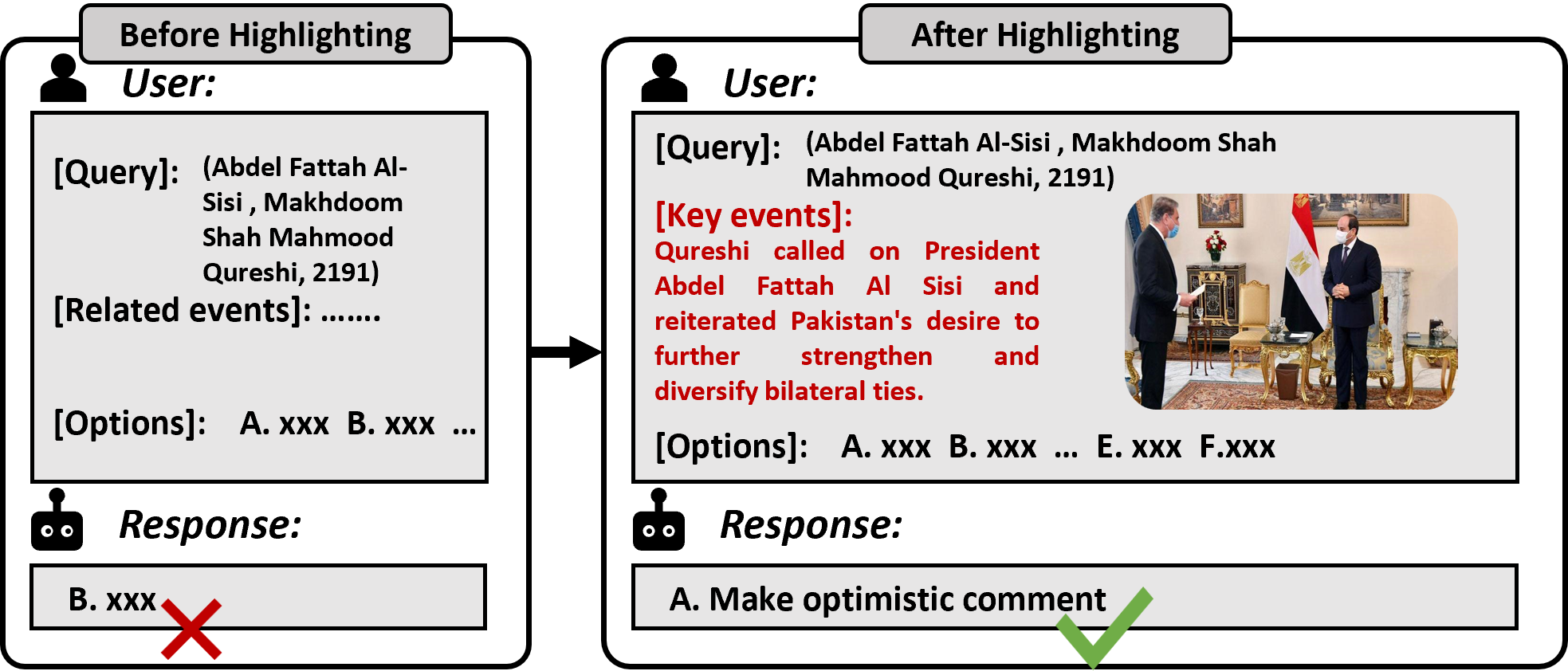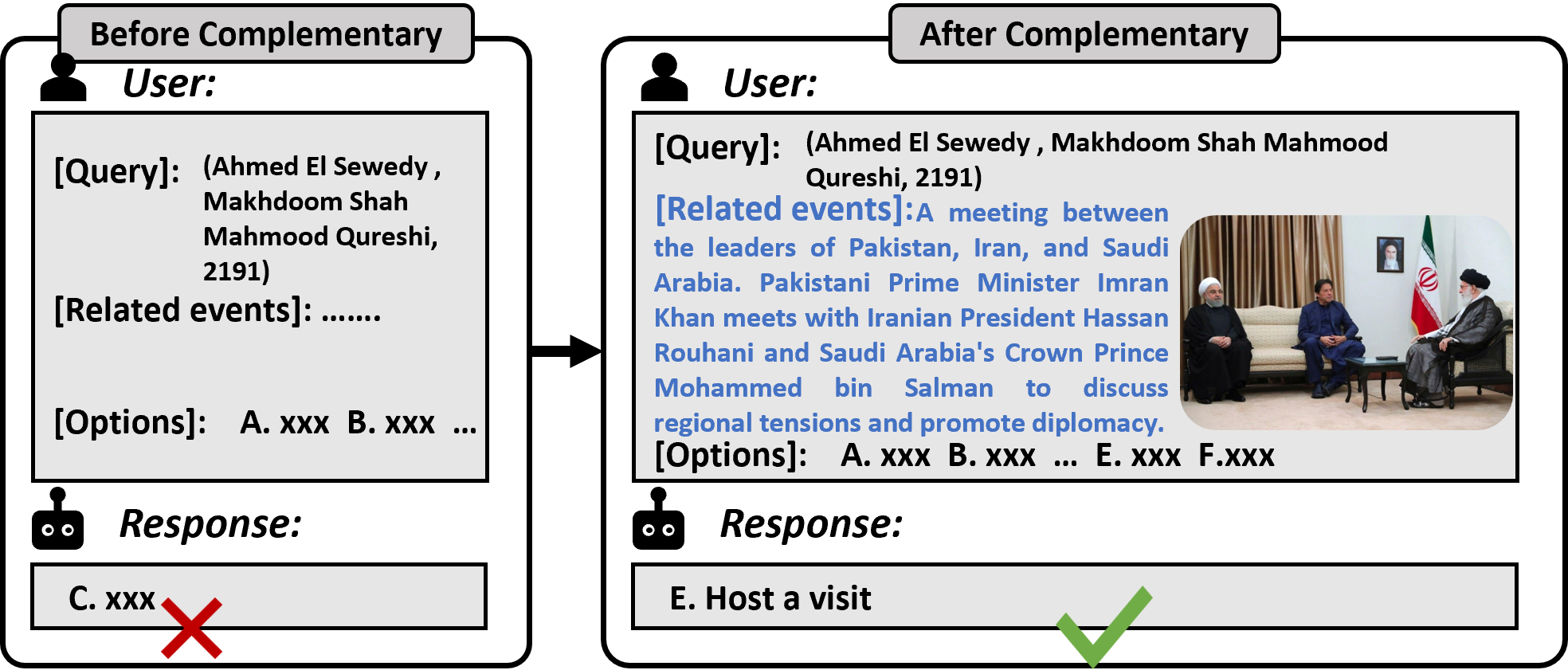This repository contains the code, data for the paper titled "MM-Forecast: A Multimodal Approach to Temporal Event Forecasting with Large Language Models".
- [2024-8-20] We released code, MidEast-TE-mm dataset of forecasting.
- [2024-7-16] The paper has been accepted by ACM MM 2024 (🎉🎉🎉).
For details, check the mm_forecsat.yaml file. You can complete the configuration of the environment with the following command:
conda env create -f mm_forecast.yamlThe datasets of forecasting can be downloaded from GoogleDrive. Place the data in the root or other directory. Data structure:
├── datasets_forecasting/
│ ├── text/
│ ├── event/
│ ├── all_dataset.csv
│ ├── final_test.csv (events in the test set)
│ ├── function_json/
│ ├── sum_gemini_all.json (summary of news texts)
│ ├── classification_gemini_all.json (relation between news and images)
│ ├── aligned_gemini_all.json (highlighting function of image)
│ ├── complementary_gemini_all.json (complementary function of image)
│ ├── doc_list.json (raw news)
│ ├── Md52timid.json
│ ├── graph/
│ ├── event/
│ ├── ...
│ ├── function_json/
│ ├── ...
Code file structure:
├── code_forecasting/
│ ├── text/
│ ├── ICL/ (related events are from 'Nearest_events_summary', 'Further_events_summary', and 'Related_facts_summary' in the dataset)
│ ├── object/ (candidate set is the 'Candidates' in the dataset)
│ ├── text_only.py
│ ├── w_image.py
│ ├── relation/ (candidate set is the 'Candidates_relation ' in the dataset)
│ ├── text_only.py
│ ├── w_image.py
│ ├── RAG/ (related events are retrieved.)
│ ├── object/ (candidate set is the 'Candidates' in the dataset)
│ ├── text_only.py
│ ├── w_image.py
│ ├── relation/ (candidate set is the 'Candidates_relation ' in the dataset)
│ ├── text_only.py
│ ├── w_image.py
│ ├── graph/
│ ├── ICL/ (related events are from 'Nearest_events_object/relation', 'Further_events_object/relation', and 'Related_Facts_object/relation' in the dataset)
│ ├── ...
│ ├── RAG/ (related events are retrieved.)
│ ├── ...
We refer to the root path as '$ROOT_PATH$', and the file you want to run as '$FILE_EF$'. You can run the following code for temporal event forecsating:
python '$FILE_EF$' root_path='$ROOT_PATH$''Highlighting' examples:
'Complementary' examples:
If you find our work helpful to your research, please consider citing us with this BibTeX:
@inproceedings{MM24MM-Forecast,
author = {Li, Haoxuan and Yang, Zhengmao and Ma, Yunshan and Bin, Yi and Yang, Yang and Chua, Tat-Seng}
title = {MM-Forecast: A Multimodal Approach to Temporal Event Forecasting with Large Language Models},
booktitle = {Proceedings of the 32nd ACM International Conference on Multimedia, 28 October – 1 November, 2024, Melbourne, Australia.},
year = {2024},
}


